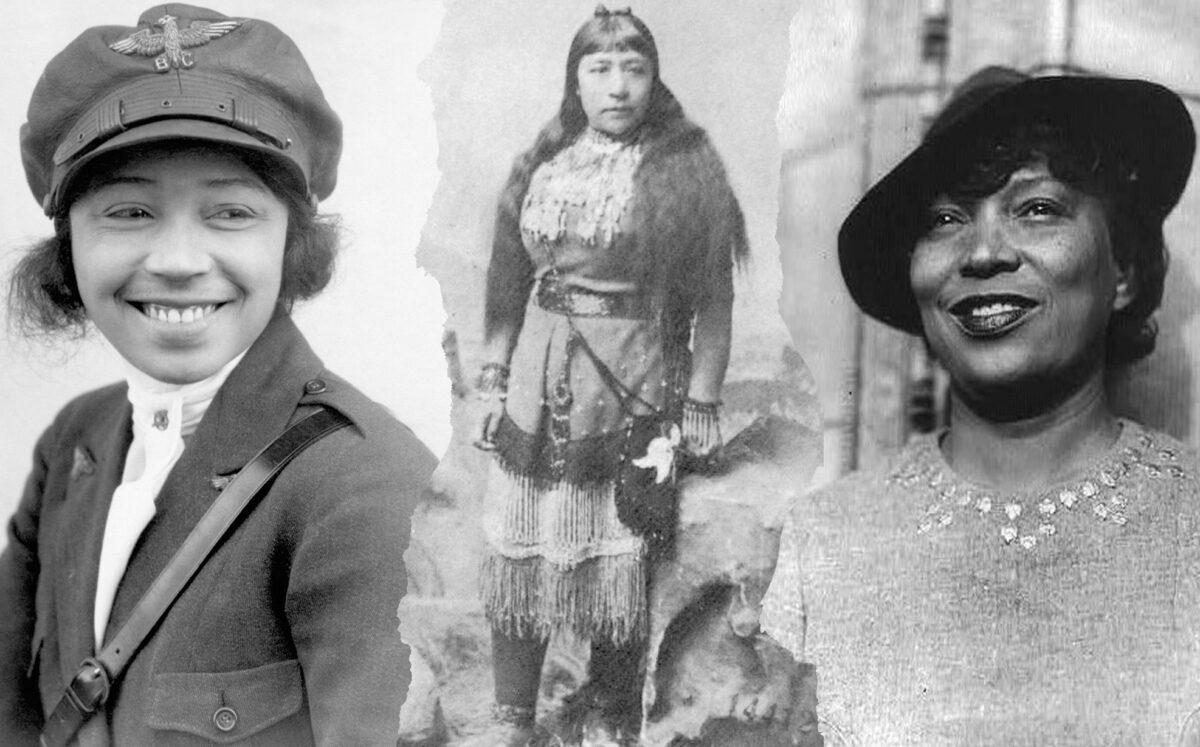The outdoors are for everyone. Even so, humanity has a long history of people monopolizing spaces to the exclusion of other identities. While everyone should have the right to explore the world, actually doing so is difficult when laws and social norms prohibit or restrict your options.
Many obstacles have barred women in the United States from traveling the world and experiencing the outdoors. Systemic racism makes these obstacles even more difficult for women of color to overcome. Despite all of this, several female explorers throughout history fought to experience the world on their terms. This Women’s History Month, honor these women by learning about their lives and accomplishments. Not sure where to start? Here are three incredible female explorers you should know about.

Bessie Coleman
Groundbreaking aviator Bessie Coleman was born on January 26, 1892. Inspired by her brothers and their stories of World War I pilots, Coleman applied to flight schools throughout the country. As a woman of African American and Native American descent, she faced rejection from each institution due to systemic sexism and racism.
Unwilling to give up on her dream, Coleman took French classes so she could apply to flight schools in France. In 1921, she earned her international pilot’s license from the Fédération Aéronautique Internationale. After returning to the U.S., Coleman gained attention as the first African American woman to perform a public flight. Her impressive flying tricks amazed people across America and Europe.
Today, her memory lives on throughout the world. Scholarships in her name encourage women and people of color to pursue aviation careers. Coleman was also inducted into the National Women’s Hall of Fame in 2001 and the National Aviation Hall of Fame in 2006.
 Sarah Winnemucca
Sarah Winnemucca
Born around 1844, author and activist Sarah Winnemucca was first known as Thocmetony. This Northern Paiute name means “shell flower.” Winnemucca grew up around what is now western Nevada and California. Despite once being kicked out of a school after parents complained about “Indians being in school with their children,” Winnemucca learned several languages (including English and Spanish) during her youth.
As an adult, Winnemucca used her communication and translation skills to advocate for Native Americans. She traveled across the country working as an interpreter, writing about her experiences as a Paiute woman, and educating Paiute children and incarcerated Native Americans. With her 1883 book “Life Among the Piutes,” Winnemucca made history as the author of the first known autobiography written by a Native American woman.
Modern anthropologists continue to recognize Winnemucca’s work today. Omer Call Stewart, a cultural anthropologist with the University of Colorado, once declared her book “one of the most enduring ethnohistorical books” written by a Native American person. Winnemucca was inducted into the National Women’s Hall of Fame in 1994 and the Nevada Writers Hall of Fame in 1993.

Zora Neale Hurston
Acclaimed author and anthropologist Zora Neale Hurston was born in 1891 and raised in Eatonville, Florida. The town was America’s “first incorporated all-black city,” and the area influenced Hurston throughout her career.
As a student, Hurston displayed a “fiery intellect.” While attending Howard University in 1918, she studied anthropology and co-founded the student newspaper “The Hilltop.” Hurston’s anthropological research focused on the spiritual practices of Black communities in New Orleans, Jamaica, and Haiti. In addition to publishing this research, she also wrote short stories, plays, and novels that drew upon her experiences of adventuring through the world. While Hurston is perhaps best known for her 1937 novel “Their Eyes Were Watching God,” she also received awards for her short story “Spunk” and her play “Color Struck.”
In the 21st century, writers, readers, anthropologists, and travelers alike remain drawn to Hurston’s work. The Zora Neale Hurston Dust Tracks Heritage Trail in Fort Pierce, Florida, leads visitors on a walking tour of her life. Here, people can begin their journey at the Zora Neale Hurston Branch Library and honor the author’s legacy while exploring markers along the trail.
